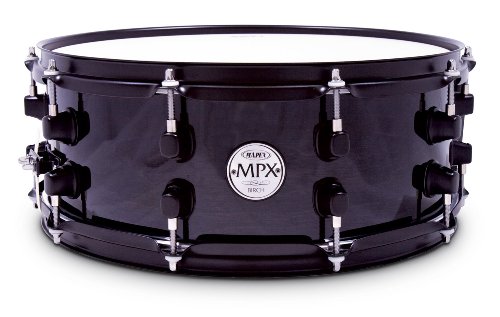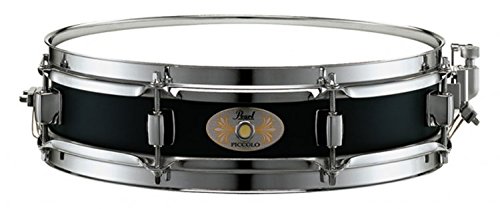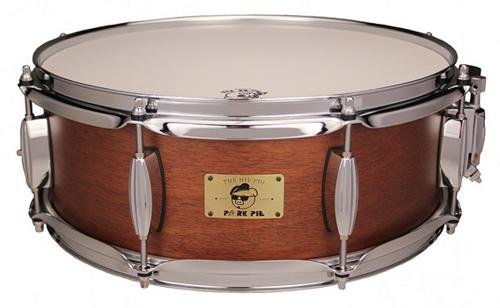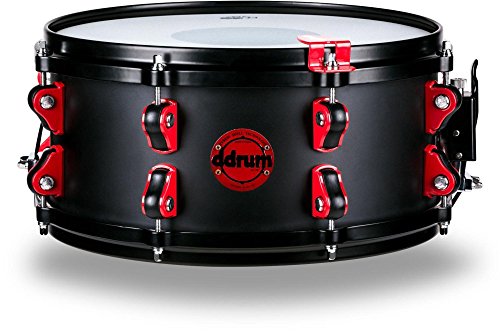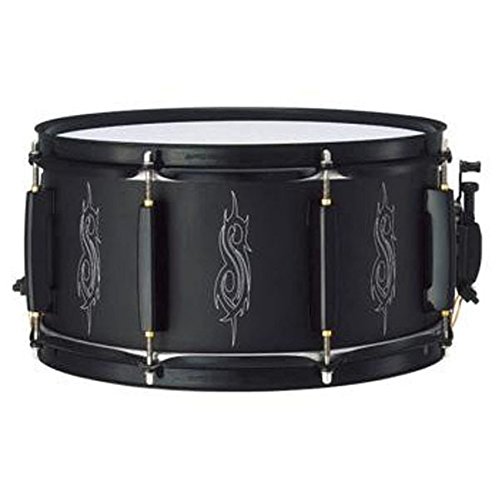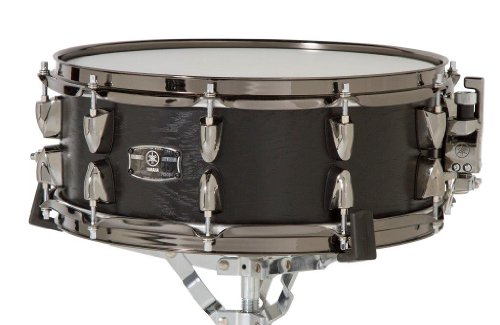Few drums are as distinctive and regularly used as the snare, which is why so many drummers hunt for the very best snare drum they can find. Whether they’re looking for something warm and resonant, or something that’ll replicate a thunderclap, there’s a lot to choose from, including some truly fantastic brands and products. For a different approach, check out our guide on the top beat makers here.
Looking for an Electric Drum Kit? Click here. If you're on a budget, you can see the top electronic drum sets under $500.
With this in mind, we’ve gone and done some of the hard work for you by bringing together ten of the best snare drums that you can buy right now. And don’t worry - we’ve taken a broad snapshot of the drum market here, ranging from compact snares that you can transport easily, to signature artist models, and even a hybrid. There’s even something here for every budget. Grab a coffee, sit back, and find your next snare drum right here. When looking at snares, it is best to also look into getting the perfect drum sticks for the snare.
If you're hoping to find a Snare for recording in the Studio, you ought to check out our review on the best microphones for recording drums.
At a glance: Our top 3 picks
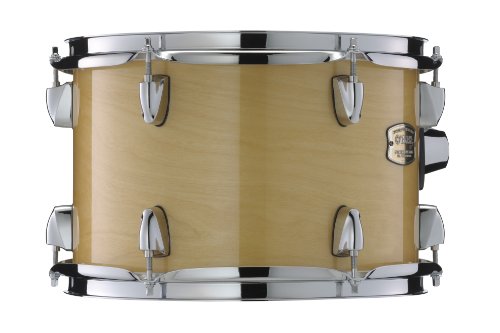
Yamaha Stage Custom Birch Snare

- Top notch quality snare drum
- Great depth and snare tone
- Beautiful looks
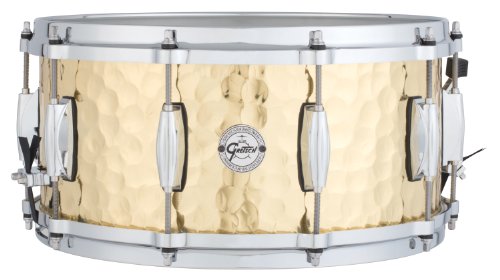
Gretsch Drums Silver Series

- Top notch quality snare drum
- Great depth and snare tone
- Beautiful looks
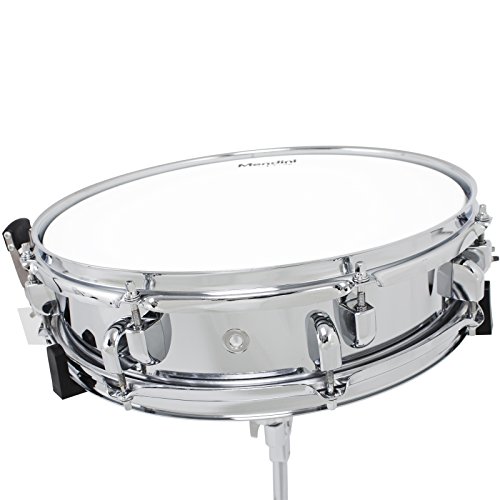
Mendini by Cecilio Student

- Top notch quality snare drum
- Great depth and snare tone
- Beautiful looks
Here is Our Review of the Top 10 Best Snare Drums for 2024 :
1. Yamaha Stage Custom Birch Snare
The first snare drum is an excellent piece of Yamaha equipment and one of the best you can buy. The Japanese manufacturer is well known for making excellent quality instruments at all price points, and the Stage Custom 14x5.5 snare drum is certainly no different.
Sound wise, the Birch construction on this snare drum means that there are two standout points for this snare. The first is that it has a nice, warm sound to it that just feels like it’s coming from a quality product. The second is that the resonance is extremely good too, with a thick tone to it, but it’s backed up with a solid punch and nice snap... Just what you want from a wood snare drum.
Being a Yamaha, this snare drum is made superbly. It’s certainly not among the most expensive snare drums out there, but it is made as though it’s one of the best. All of the hardware looks and feels like the best quality stuff, and the six-ply birch on the drum shell is great. You can also choose from several colors, all of which look good, though the natural wood is probably the nicest of them all.
Pros:
+ Top notch quality snare drum
+ Great depth and snare tone
+ Beautiful looks
Why We Liked It - Yamaha’s Stage Custom Birch snare drum is certainly going to take some beating as the best snare as we carry on through our list. It’s just very good all round, with no weaknesses. You could spend more and maybe get flashier looks and hardware, but ultimately, most drummers aren’t going to need anything more than what this snare drum has to offer if they’re in the market for a wood shell.
Snare size - The size of your snare drum will impact how it sounds just as much as the shell material. Smaller snare drums tend to vibrate more quickly, which means they produce a higher-pitched sound. Larger snares are the opposite, vibrating more slowly and producing a lower-pitched sound. Decide what sound you want before you buy.

2. Gretsch Drums Silver Series
The first thing that strikes you about this Gretsch snare drum is undoubtedly going to be the way it looks. It’s drop dead gorgeous, and quite possibly the best-looking snare drum we have on our list. The Silver Series is available in a variety of colors and finishes but the one we’ve got there is the premium hammered brass one.
The concept is simple. By using brass, Gretsch hope that they can create a feel that’s somewhere between the warmth of a wood snare drum, and the snap of a metal snare drum that really cuts through the mix. It works very well, and this is a snare with an undoubtedly unique sound. That hammered finish isn’t just for show either. The Gretsch sound engineers have done this to really focus the sound into a nice punch.
This is one of the more pricey snare drums on our list, but you do get what you pay for. The die cast hoops, and the rest of the chrome hardware all feel super robust. This is a snare drum that feels premium, and is perfectly suited to the touring environment.
Pros:
+ Stunning looks
+ Unique sound and best for versatility
+ Excellent drum brand reputation
Why We Liked It - If your budget stretches to this particular snare drum, then it absolutely has to be on your list. It’s beautifully crafted in every respect, and has a wonderful sound to it. It’s probably one of the most versatile snare drums on the market, if not the best, and would suit just about any kind of music when set-up right.
3. Mendini by Cecilio Student
If you’re just starting out learning the drums, you’re buying for a child (click for junior kits), or you just need a sole snare drum for some busking or similar, then you’ll want to pay attention here, because this might be the best choice. The Mendini by Cecilio Student is, as the name suggests, designed for learners and those on a tight budget.
It’s very cheap for a snare drum, but comes with a stand and case, and essentially does everything that you need it to. Unlike many other cheap snares, this one isn’t going to rattle at you or fall out of tune within five minutes of playing, and it has a decent sound too. We’re really quite impressed.
The price does mean that you’re not getting anything particularly flashy, and the snare drum might need some setup by someone with experience to get the most out of it, but that’s the case even with some options in higher price brackets. Sit down and set this cheap snare drum up to your tastes - it’s going to do you proud.
Pros:
+ Best value snare drum
+ Comes with stand and case
+ Well made
Why We Liked It - If you’re on a budget or you’re just looking for something to practice on as a non-primary instrument, then you really cannot go wrong with this option. It’s pretty well made, it sounds fine, there are no obvious cost cutting measures, and it even comes with a stand. This is a truly great budget snare drum. Looking for something even smaller to practice with? Try a drum practice pad here.
Your favorite drummer - Don't buy a particular snare drum just because your favorite drummer owns one. Assuming that it will sound the same is a misconception that beginners often fall foul of. The sound isn't just about the snare; it's about the player and how it's set up too. Focus on developing your own sound.

4. Birch Mapex MPX
The second all-birch snare drum on our list is the very well priced Mapex MPX. It’s a 14 by 5.5 inch snare drum that comes with Remo heads as standard, and very much aimed towards those on a budget who still want a good product for their cash.
The sound this snare drum produces is fairly distinctive, with a nice depth and a surprisingly bright feel, which is certainly down to the birch construction. The pickiest of drummers may want to opt for a different head, which isn’t the besr, and some careful tuning, but it’s more than adequate out of the box, and would suit a beginner or even intermediate player really well.
We really like the way this snare drum looks too. The transparent black finish is a beautiful go-between wood and solid black, and it’s complemented really well by the neat black hardware. Pair it with an all-black drum kit, or let it stand out by itself.
Pros:
+ Great looks
+ Great value snare drum
+ Suited to a wide variety of styles
Why We Liked It - This is another very good low priced snare drum that could easily cost twice as much as it does. It’s not often that you get something in this bracket that looks as nice as this, comes with very tidy looking hardware, and has a nice, complex, all-round sound. Highly recommended as one of the best budget options.
5. Pearl S1330B Black Steel
One of the biggest and best names in drum manufacturing, our list wouldn’t be complete without at least one of Pearl’s snare drums, and this will be an interesting addition to our best ten snares. The one we’ve chosen here (though there is another Pearl to come) is the Black Steel Piccolo snare drum, which is a compact 13x3 inches.
The sound is incredibly crisp, to the point that a lot of people who are used to standard snares might even be tempted to use on of these things as part of their primary setup - it’s that addictive. It’s certainly different to the resonant sound you’d get from a standard all-birch snare drum, but in a good way. You can see why some drummers such as Neil Peart of Rush actually prefer them.
Build quality is top notch as you would expect from a Pearl snare drum, with everything feeling like it was crafted to a high standard with top hardware. This is a serious snare drum that’s design is to be used for whatever is thrown at it, whether you’re an amateur or professional. It’s also priced very well indeed.
Pros:
+ Great piccolo sound
+ Pearl durability and quality
+ Excellent value snare drum
Why We Liked It - Piccolo snare drums are certainly not to everyone’s tastes, but if you’re thinking about giving one a go, as part of your main kit or just a peripheral option, then the S1330 is a no brainer. It’s got a great little pop and ring to it, is made just as you’d expect a Pearl to be, and comes in at a very reasonable price.
6. Pork Pie Little Squealer
A hugely punchy steel snare drum, the Little Squealer is a snare for those who want to really make an impact on the mix, and comes from top end American manufacturer Pork Pie. If you’re looking for something with real groove, then this snare drum may well be it.
This is an all steel snare drum with triple-flanged hoops, and it just sounds awesome. Start hitting it and you can immediately feel that it’s special - mostly because of how loud it is. Give it a rim shot and things go one step further. It’s no wonder the likes of Van Halen and Guns n Roses had their drums customized by Pork Pie back in the day. The Little Squealer snare drum is definitely set up best for some hard-hitting music such as rock and metal.
The Little Squealer line may be made in Taiwan, but there’s no doubt that the same standards of American build quality are present. You won’t find any low quality hardware on this thing whatsoever - it feels super robust and would be best suited to the touring environment.
Pros:
+ Best quality snare drum
+ Stylish looks
+ Powerful sound
Why We Liked It - This is one of our favorite snare drums, just because it’s so very characterful. You can feel that it’s a premium quality drum, and that people who really wanted to make something special have designed it. It’s not going to be suited to certain types of music, but if you’re after a steel snare drum in this price bracket, there’s not much better.
7. Ddrum Hybrid with Trigger
Why We Liked It - This hybrid snare drum isn’t going to be for everyone, because lots of drummers will want to stick only with their acoustic sound, but if you’re building a hybrid kit then this piece comes highly recommended. It looks really cool, has good quality hardware, and won’t break the bank.
8. Ludwig Supralite
Here we have a steel snare drum with chrome-coated hardware for an all-chrome technical look. It doesn’t come across as being anything fancy, and it’s priced in the mid range. All of that hides the fact that this is one killer snare drum.
Hit it a couple of times and you’ll want earplugs, because this thing is loud. It has a really powerful and bright crack to it, supported by a cannon like depth and boom that means the Supralite is definitely going to get noticed in the mix. We think it’s one of the best sounding snares on the list with the stock heads and setup.
We’re also pleased to say that the build quality on this snare drum is very impressive too. Ludwig are known to be used by some major drumming legends such as Ringo Starr and John Bonham, so you should have no concerns about its durability and suitability for touring.
Pros:
+ Loud, no-nonsense steel snare drum
+ Nice all-chrome finish
+ Very good quality build
Why We Liked It - We really like this snare drum, and think it would be best suited to those playing rock or metal that want something that will really make itself heard over the rest of the band. It sounds awesome, is made well, and has the Ludwig reputation backing it all up.
9. Pearl Joey Jordison Signature Slipknot Snare
The second Pearl snare drum on our list is something a little special. This is the Joey Jordison signature model and it rocks. For those not in the know, Jordison is the former drummer of nu metal legends Slipknot, and has played with acts ranging from Marilyn Manson to Korn. He’s regularly rated as one of the best drummers in metal.
With that kind of resume, you’d expect this to be one seriously aggressive snare drum, and you’d be dead right. This is a loud steel snare that is designed to really make it heard, and the rim shots are something else. If you play metal, then it’s going to be very difficult to find anything better than Jordison’s signature snare drum.
Being a signature model, this is not a cheap option of course. Coming firmly in at the highest end of our price brackets, it’s going to be only for those who appreciate the styling and the provenance of this snare drum. As you’d expect, it’s all black with matte paintwork, and depending on the year of model you purchase, it comes with or without the Slipknot logo.
Pros:
+ Awesome looks
+ Aggressive sounding drum
+ Professional standard
Why We Liked It - A premium product for a fairly niche group of drummers, this isn’t going to be for everyone, but those who appreciate Jordison’s work are going to love it. Every inch of this snare drum has been made with metal in mind, from the stunning aesthetic to the hardwearing, high quality hardware. It could well be the best snare for metal.
10. Yamaha Live Custom
Our final recommendation is the truly excellent LNS-1455 snare drum by Yamaha, part of the Live Custom family. Initially, it looks much the same as many of the snares on this list, but we can assure you that it isn’t. This is the only snare drum in our top ten that’s actually made from oak ply, which is not a hugely common choice.
The upshot is that the sound this snare drum produces when tuned low is a very deep, assertive and thick. It’s not quite like anything else if you’ve never heard an oak snare drum before, and is probably most suited to those who like to be different, and perhaps want some experimentation in their music. That said, it could work its way into everything from jazz to metal.
Being a Yamaha, the quality on this drum is almost perfect. This is firmly a mid-range snare, but a boutique shop could of made it - it’s that good. It also looks great too, with a glossy paint finish to the wood that allows you to still see the oak grain.
Pros:
+ Oak shell for deep tone
+ Yamaha build quality
+ Well finished drum hardware
Why We Liked It - This is one of those drums that you really need watch some videos of to hear how it sounds. The oak ply gives it a unique character that a lot of drummers are going to love. Combine this with great Yamaha quality that ranks among the best, and we have a fantastic final addition to our snare drum list.
Dynamic control - The snare drum is the one that cuts right through the mix, or at least it should do. One of the worst things you can do is bash away on the hi-hat so hard that your snare loses its appeal. Never forget that drums are all about dynamics and accents.

Snare Drum Buyers Guide
What is the best sounding Snare Drum?
Given that there are many different types of snare drum, it’s extremely difficult to say which is the one that sounds the best. And indeed, we’ll cover some of the most popularly requested music types in the next section. However, there are some universal things that will make a snare drum sound better than another snare drum.
The first is of course whether or not the snare drum is tuned properly. Now, this is certainly something that can be achieved on any snare drum, but what you’ll find is that a lot of the more accomplished snare drums will do a much better job of staying nicely tuned. Better hardware (and better heads) tends to stay in tune for longer and won’t distort under heavy playing.
Additionally, better hardware will make it easier to get your snare drum to sound like you want it. So the takeaway here is that you should look to get the best hardware you can for your money. This will give you the flexibility you need for the best sounding snare drum.
In addition, better quality materials will change the sound of the snare drum. Some woods are cheaper and less resonant than others for instance. Some people also think that using a single piece of curved wood is better sounding than laminated wood.
Finally, build quality is very important too. If there are defects or poor design, these can have negative effects on the sound of the snare drum. They can manifest themselves as annoying rattles or rings that shouldn’t be there, and it’s not always possible to tune them out.
What Snare Drum is best for Metal?
Due to the sharp nature of snare drums, particularly when a rim shot is involved, they are naturally popular components of heavy metal music, which is one of the reasons that we’ve got a signature metal snare drum in this top ten list.
As a result, a lot of people ask which snare drum they should choose if they play mostly metal. This isn’t an easy question to answer, because there are of course many, many different types of metal, which will call for differing snare drum sounds. Traditional heavy metal might want a different sound to nu-metal, and death metal and black metal, while similar to the untrained listener, are completely different too. There’s also the fact that how you play arguably has more of an impact than what you play on, so there isn’t necessarily a snare drum that’s best for all kinds.
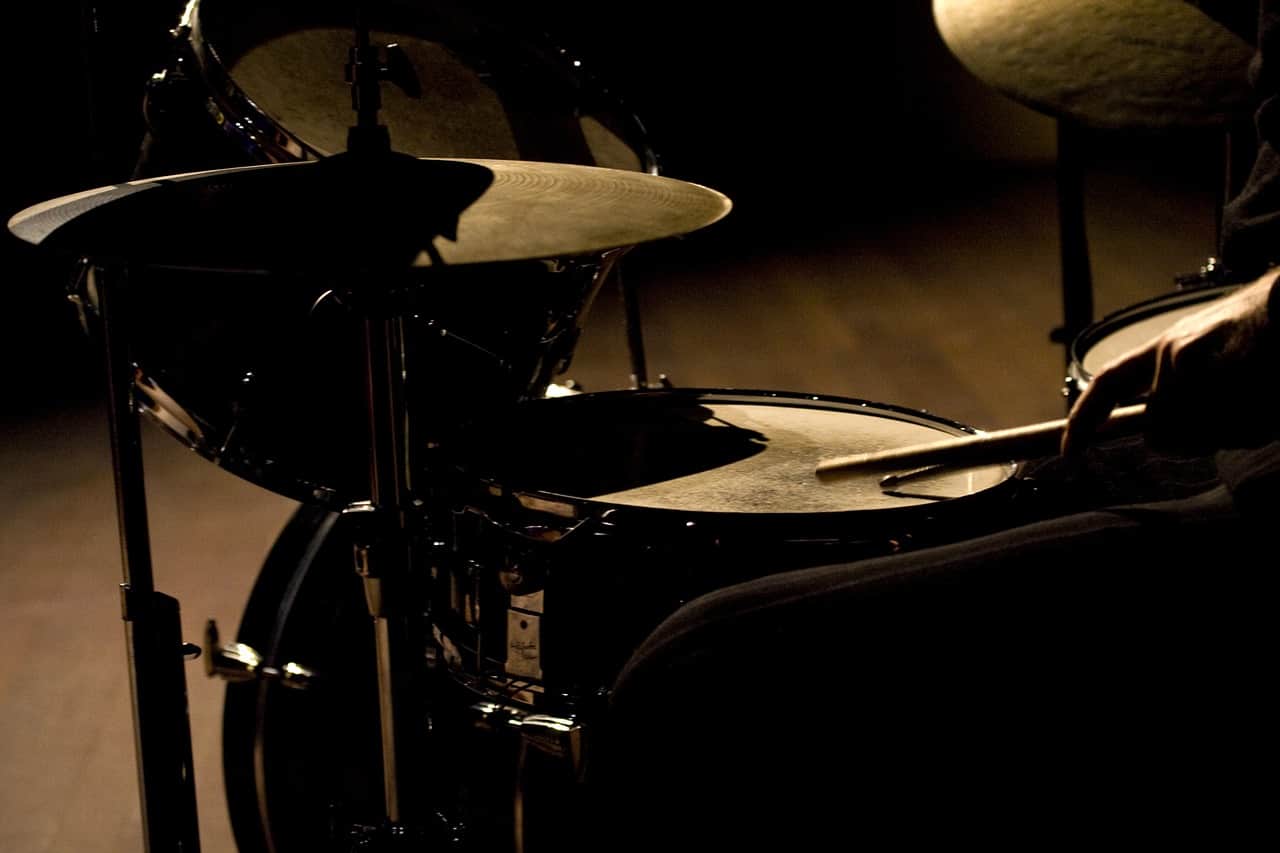 Even for different songs and albums, differing sounds might be called for. One of the most famous examples of this is the St. Anger album by thrash metal legends Metallica. Even those who are completely unfamiliar with how drums work and sound will be able to tell immediately that there is something different about one of the drum noises.
Even for different songs and albums, differing sounds might be called for. One of the most famous examples of this is the St. Anger album by thrash metal legends Metallica. Even those who are completely unfamiliar with how drums work and sound will be able to tell immediately that there is something different about one of the drum noises.
Rather than the usual crack of a snare drum, there’s this loud, abrasive clanging noise present that was popular among some critics, and very unpopular with lots of fans. It wasn’t until well after the release of the album that drummer Lars Ulrich revealed that he got this sound by using a metal snare drum, tightening it up really tight, and then disconnecting the snare wire itself. This gave a sound that is almost like hitting a trashcan and is a major departure from his normal snare drum sound.
Now, it’s unlikely that you’re going to be as experimental as people like Lars Ulrich, so there are a few things that you can think about which may help you make the right decision when it comes to picking something that you can use for most styles of metal.
The first is that, coincidentally, most metal drummers will use metal snares. So consider looking at steel and brass options, as they are likely to get you the closest to the sharp, loud and resonant crack that is present in this kind of music. Lots of drummers do use wood for its depth and warmth, so don’t feel like you’re totally restricted, but this is going to be the best choice for you.
The next thing that you can do of course is to make sure you take a look at what snare drum your favorite drummer or bands do actually use. This information is usually pretty easy to find, and will really help to take some of the legwork out of finding out what is best. See if you can try one of these out before you go online and make your purchase.
Finally, metal is more than just a sound - it’s an aesthetic too. Instruments aren’t just for making music - they have to look good. With this in mind, you might want to go for a snare that has a look that matches the rest of your kit, which is certainly likely to have an alternative edge. The best are always black or otherwise dark and moody.
And of course, if you’re really not sure what to choose, then the Joey Jordison signature Pearl snare drum that we included in our list would be a very good option for just about any metal player. We’ve given a comprehensive look at it above, and think it’s a great fit if you really do value the ability to stand out and make those thunderclap rim shots. It’s probably the best all-around metal snare drum out there, even if the sounds of Slipknot aren’t quite your flavor of metal.
We’d also recommend taking a look at the Ludwig Supralite snare drum, which has some real power and cracks behind it, or the loud and groovy Pork Pie Little Squealer snare drum.
What is the top Snare Drum for Jazz?
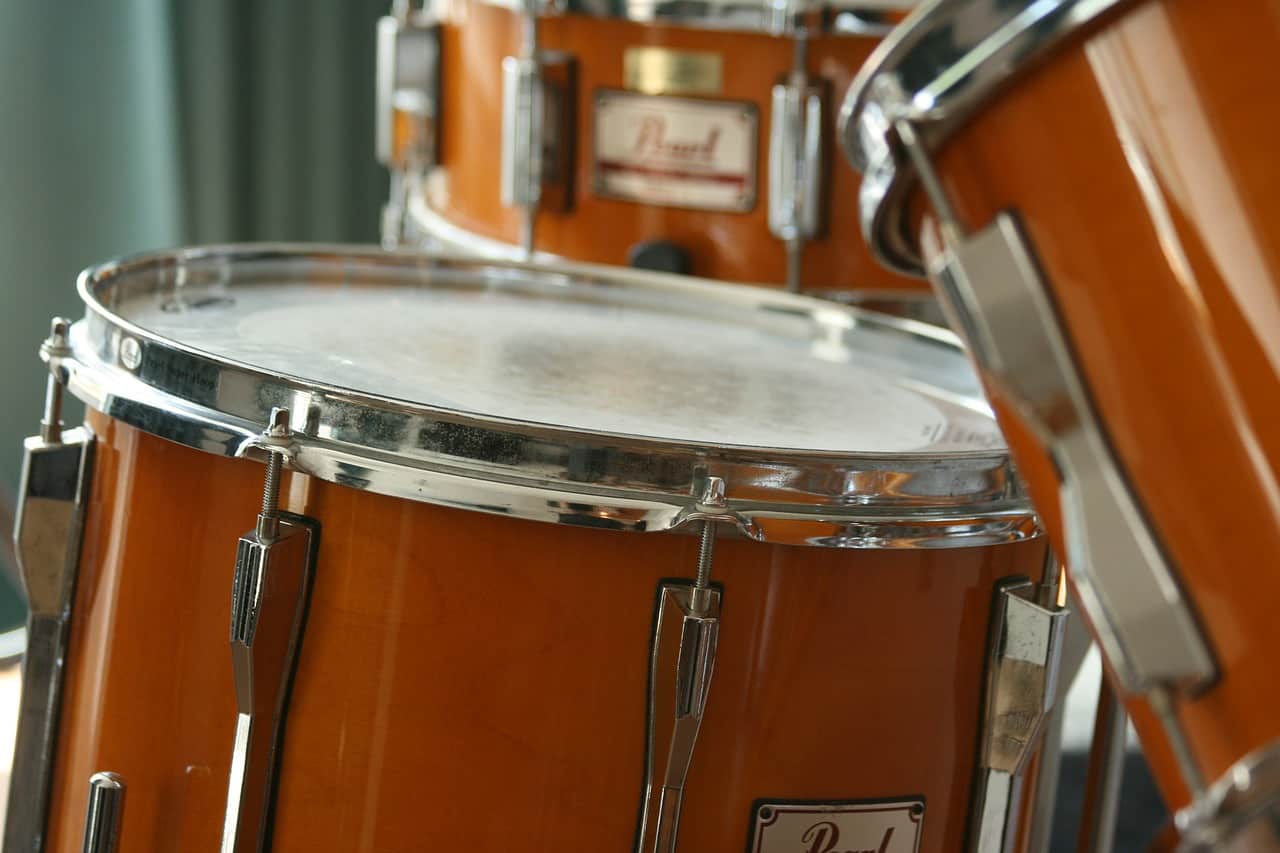 Jazz is one of those genres where people really love to get the genuine, authentic sound right, which is why a lot of drummers ask what snare drum they should be using for it. As with metal, there’s no right answer and no best snare, and that’s because jazz is and always has been about experimentation and pushing the boundaries. Nobody can tell you-you're playing the wrong type of snare to play jazz.
Jazz is one of those genres where people really love to get the genuine, authentic sound right, which is why a lot of drummers ask what snare drum they should be using for it. As with metal, there’s no right answer and no best snare, and that’s because jazz is and always has been about experimentation and pushing the boundaries. Nobody can tell you-you're playing the wrong type of snare to play jazz.
You’ll find that jazz drummers will use all kinds of types of a snare drum for their recording and live performances. Some will use very large and bass-y snares - some will use piccolos, some will use wood, and some will use metal. That said, as a general rule, wood is usually more popular than metal because of the warmer tone it tends to produce. And other different types of wood, maple is preferred, just as with guitar tops.
The head will likely make a very large difference too, but remember that you can easily change this to something more suitable if you don’t feel it sounds jazzy enough from stock. Most drummers in this genre would opt for a nice single ply coated head to ensure there are a reasonably high pitch and some sustain to the snare’s sound. Critically, it will also allow for some sensitivity and a really responsive feel.
This responsiveness is something you definitely want to look for if you’re picking a snare for jazz, because there can be a lot of complexity with jazz beats, and you need your snare to be able to keep up. If it can only really produce one sound and doesn’t respond much to the way you hit it, it’s not going to be much use in this particular genre.
It’s therefore really important to be aware of the fact that when it comes to jazz, it’s the tuning of your snare drum that makes the biggest difference, not the instrument itself. Tuning makes a huge difference to how responsive your snare drum is, which means that you can probably use just about any snare drum for jazz if you set it up right.
What you’re looking for, again, is your setup to be nice and responsive without too much of a crack when you hit the head, and some warmth going too. That will give you the best sound.
On our list, we’d look at either of the two listed Yamahas if we wanted something with enough versatility and response for a good range of jazz sounds. They’re the best at giving you that variety.
How to Tune a Snare Drum?
Snare drums will naturally detune after being played for a while, and when you first buy a snare drum, it will take a little will for the head to be broken in properly. Once it is, it will need tuning. With this in mind, we’re going to take a look at how to tune a snare drum properly so that it’ll sound as good as it should.
You’ll know that your snare needs tuning when the sound is no longer crisp and sounds what many people would describe as ‘wet’. Sometimes the sound will be uneven too - the same note should be heard at the same distance from the edge of the snare drum all the way around. So if you hit the head 3” from the edge, it sounds the same as hitting it 3” from the edge on the other side too.
It’s very important to note at this point that unlike lots of instruments, there isn’t necessarily a snare drum that is ‘perfectly tuned’ or set up the best. This is because different people playing different types of music will have different sounds that they want to produce. Tightening and loosening certain elements of the snare drum will change its characteristics, though you do want the right not to be sounding on the head, and for it to be consistent which is what we’ll help cover.
First, the bottom head, which is also known as the resonant head, because it’s the one that resonates and makes the classic snare drum sound after you’ve hit the top head.
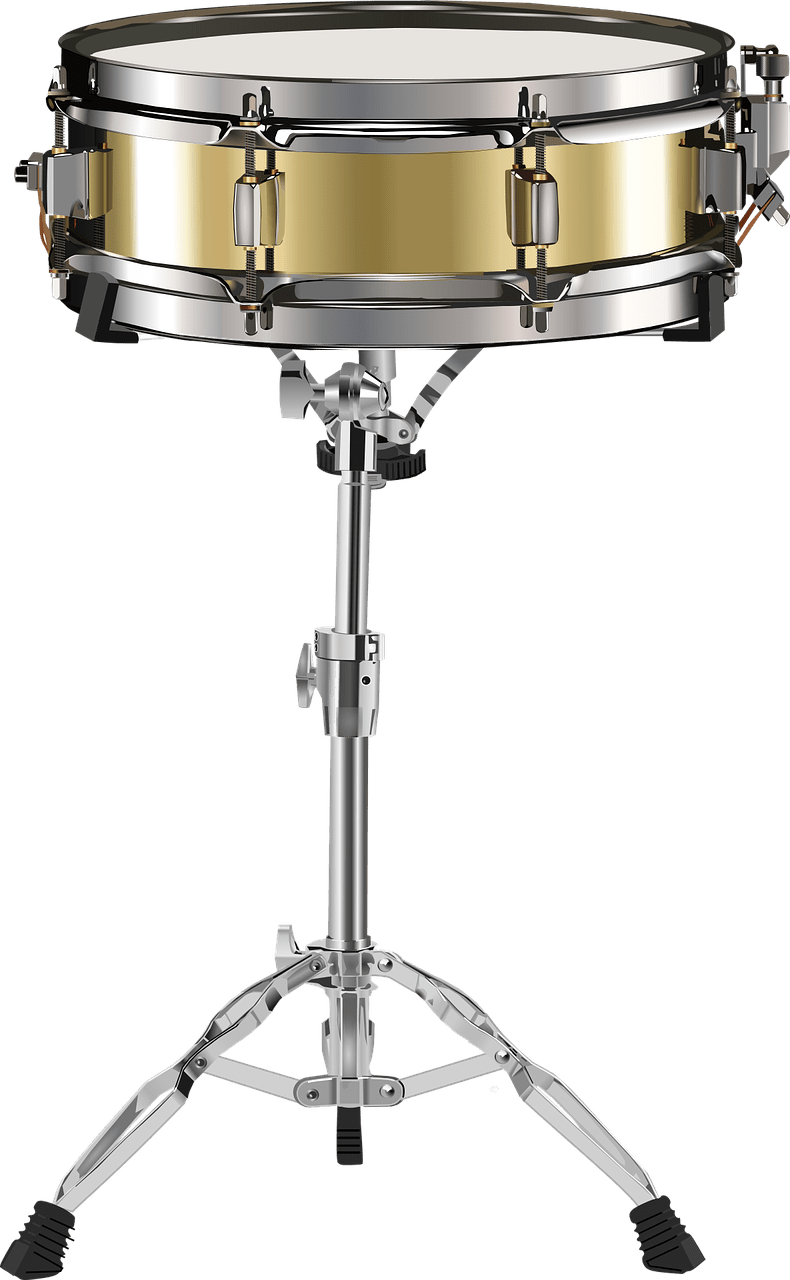 The first thing to do is undo the snare wires, which are the very thin wires that run across the snare drum head and give it the distinctive sound. These are generally clamped into place and can be unlocked fairly easily. If you can’t easily figure out how to do this, then most drum manufacturers have instructions for their own mechanisms and the best way to use them on their websites. You may also have an instruction manual.
The first thing to do is undo the snare wires, which are the very thin wires that run across the snare drum head and give it the distinctive sound. These are generally clamped into place and can be unlocked fairly easily. If you can’t easily figure out how to do this, then most drum manufacturers have instructions for their own mechanisms and the best way to use them on their websites. You may also have an instruction manual.
Next, you’re going to want to tighten all of the nuts that go around the head use your hands initially to get them to a reasonably tight state and then get out your drum key (or a normal socket of the correct size). Tighten each one up as much as possible; until the head only has a few millimeters of giving when you push it with a finger or thumb.
Now it’s time to make sure that the entirety of the bottom head is nice and equal. Using your drum key, you want to begin with one bolt, and turn it about a half of one turn. Then, move to the bolt on the opposite side of the head and do the same. Keep doing this all the way around the head, always adjusting in opposite pairs, until the whole thing feels equal, turning the drum key only a small amount. This is the best way of keeping it uniform.
You can test this by pressing down the same distance from the edge of the drum all the way around the head and feeling for any inconsistencies. Everything should be tight an equal, with no creases and a very smooth look. Do be aware that over tightening is possible, which can break the head, so make sure you’re allowing for a little bit of giving.
Next up is the batter, the top head and the one that you’re going to be hitting with your drumstick. It’s this one that needs to be making the right note when you hit it. Leave the snare wires unhooked for now.
Start by using your drum key to loosen all of the bolts to the point that the head is no longer actually under any tension, but make sure that the rods are still in place. If you’re putting a brand new head on, or the head has never been played before (such as if it’s a brand new snare drum) then you might want to give it a gentle push in the center just to help stretch it out a bit. This will reduce the time it takes to go out of tune and is the best way of breaking it in.
As we did with the bottom head, we now want to go round by hand and tighten up all of the bolts on the tension rods, of which there are usually eight. Do this in the same way as we did with the bottom head, in opposing pairs. Once they’re relatively tight, get out your drum key and work your way around the bolts again, tightening at around half a turn in opposing pairs.
Once the head feels like it’s at the right tightness, you can use your drumstick to hit it at the same distance from the edge all the way around, just like we did with our finger with the bottom head. Make sure you’re hitting at exactly the same distance from the edge of the drum, and listen out for any changes. Differences mean that there is uneven tension, and you’ll need to adjust in pairs to change this.
You’re listening for notes between G and B flat on a standard 6.5” snare drum for the best tone, but this will narrow to A flat to B if you’re working with a shallower snare. Those that are very keen on having a perfectly tuned instrument will also want to ensure that the resonant head is at the right pitch too, though this isn’t always necessary for most people, especially when playing music with a band.
Once you’re happy with everything, you can turn the drum back over and refit the snare wires. These should be perfectly straight against the bottom head for the best sound. Give the whole thing a once over and check how it sounds with the snare wires back on before you get it back on the stand and in your kit.
Top Choice - Yamaha Stage Custom Birch
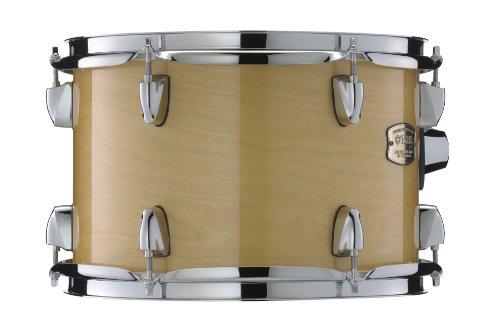 We’ve decided that the Yamaha Stage Custom in birch is our very best snare drum, and that’s because we think that it’s accomplished in all areas, and is a very good price too. You could pay a lot more for a different brand or model of snare drum and still not get a better snare for your money.
We’ve decided that the Yamaha Stage Custom in birch is our very best snare drum, and that’s because we think that it’s accomplished in all areas, and is a very good price too. You could pay a lot more for a different brand or model of snare drum and still not get a better snare for your money.
You’d normally expect a mid- or upper-range product to hit our top choice, but the Stage Custom snare drum is at the lower end of the price range despite its accomplishments. The birch shell helps to give this snare a really nice warm tone, making it best for a lot of styles, and you just know that you can get this thing out of the box and it’ll sound great right away.
When you do get it out of the box, you’ll notice immediately the real quality of the snare drum you’ve just bought. The wood is wonderfully finished, whichever color you choose, and all of the hardware sits beautifully against it. You could upgrade any of the components but you really won’t need to - this is just a fantastic, all-around best, wood shell snare.
Premium Choice - Gretsch Drums Silver Series
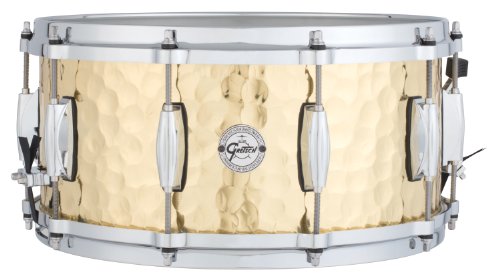 The premium choice just had to be Gretsch’s Silver Series Snare Drum in Brass. No other snare drum on our list is quite so obviously a premium product, from the brand to the construction, to the tone and style. We absolutely love the way it looks, with that hammered brass shell contrasting against the chrome hoops and hardware.
The premium choice just had to be Gretsch’s Silver Series Snare Drum in Brass. No other snare drum on our list is quite so obviously a premium product, from the brand to the construction, to the tone and style. We absolutely love the way it looks, with that hammered brass shell contrasting against the chrome hoops and hardware.
The way it manages to straddle the gap between the warmth of a wood snare and the cutting power of a metal drum is very impressive too. We really like the way that you can tune this thing to do almost whatever you want, which certainly justifies the price tag. If you’re looking for something bluesy and characterful, you can do that, but similarly, if you play classic rock, you can get the right sound too. It’s a very versatile snare drum.
And of course, the premium choice has to be a real quality product, and the Silver Series Gretsch certainly is. From the hoops to the shell, and the drum tuners to the snare latch, everything is made to a very high standard, and is sure to last a very long time. You could certainly see this as an investment rather than going for a cheaper option. It’s one of the best.
Great Value - Mendini by Cecilio Student
 We love seeing a really low budget option that surprises everyone, and the Mendini by Cecilio Student snare drum does just that. It’s extremely cheap for what it is, but it’s no throwaway instrument. It’s pretty well made with no clearly poor quality parts, and we didn’t hear any of those annoying rattles that you can sometimes get on cheaper drums.
We love seeing a really low budget option that surprises everyone, and the Mendini by Cecilio Student snare drum does just that. It’s extremely cheap for what it is, but it’s no throwaway instrument. It’s pretty well made with no clearly poor quality parts, and we didn’t hear any of those annoying rattles that you can sometimes get on cheaper drums.
The sound is good too, with a nice, reasonably bright tone and a surprisingly good crack. You might want to change the head if you want a little bit of an upgrade or to make it a bit more responsive, but otherwise, this is a perfectly serviceable snare drum and definitely shouldn’t be overlooked.
It’s also great to see that even at this price point you can get some freebies thrown in. The Student snare drum (read the study) comes with a stand and case, which makes it even better if you just want a singular snare drum that you can use to practice on. You can literally buy this, some sticks and you’re done. It doesn’t look half bad either. It’s definitely the best value option.
Conclusion
So whether you want your snare to be loud, crisp and aggressive, our you’d like something more responsive and colorful, we’re sure to have covered the best snare drum that’s right for your needs. There are some really standout instruments on this list, which are the best in their respective categories, and any of them would make a great purchase. For the study on snare drums in percussion, click here.
If you liked this review by Music Critic, please leave a positive rating:

